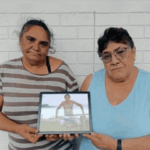Can I Object to a Coronial Autopsy?

Hearing that a deceased loved-one may be examined via an autopsy can be an incredibly distressing experience.
But there are some circumstances where you can object to an autopsy, and here’s an outline of them.
What is a coronial autopsy?
A post-mortem examination – also known as an autopsy – is a highly-intrusive medical examination of a deceased person’s body.
The most common purpose of a post-mortem is to provide information about a person’s cause of death, but the procedure may also reveal inherited conditions, and serve to improve clinical care.
A general (or medical) autopsy occurs when a person has died of an apparent natural death, but a medical practitioner nevertheless believes the procedure may address unanswered questions.
A general autopsy can only occur with consent from a deceased person’s next of kin, which may be a spouse, domestic partner or closest living blood relative who is over the age of 18.
A coronial autopsy is different. It is a medical investigation ordered by the New South Wales Coroner in cases of a “reportable death”.
What is a ‘reportable death’?
Section 6 of the Coroners Act 2009 (NSW) (the Act) outlines that a “reportable death” includes circumstances where:
- the person died a violent or unnatural death;
- the person died a sudden death the cause of which is unknown;
- the person died under suspicious or unusual circumstances;
- the person died in circumstances where the person’s death was not the reasonably expected outcome of a health-related procedure carried out in relation to the person; or
- the person died while in or temporarily absent from a declared mental health facility.
A forensic pathologist will perform the autopsy on behalf of the Coroner in order to determine the cause and/or manner of death or, in some cases, the identity of the deceased.
A coronial autopsy can occur without the permission of next of kin, but there are options if you are concerned about this process.
Can you object to the coronial autopsy?
Anyone can object to a coronial autopsy, but the level of rights you have when objecting will depend on your relationship with the deceased.
Section 99 of the Act allows anyone to object to a post-mortem examination, which the Coroner must consider before proceeding with autopsy. There is no obligation for the Coroner to follow this objection.
Section 96 of the Act allows senior next of kin to make a more formal request, in writing, that a post-mortem examination not occur.
In response to this, the Coroner must consider whether an autopsy is necessary or desirable given this request and respond, in writing, to senior next of kin informing them of their decision.
“Senior next of kin” of the deceased has a technical meaning, and it determined by following the steps outlined in section 6A of the Act:
- the deceased person’s spouse, or
- if the deceased person did not have a spouse or a spouse is not available–any of the deceased person’s children who are adults, or
- if the deceased person did not have a spouse or child or a spouse or child is not available–either of the deceased person’s parents, or
- if the deceased person did not have a spouse, child or living parent or a spouse, child or parent is not available–any of the deceased person’s brothers or sisters who are adults, or
- if the deceased person did not have a spouse, child, living parent, brother or sister or a spouse, child, parent, brother or sister is not available–
- any person who is named as an executor in the deceased person’s will, or
- any person who was the deceased person’s legal personal representative immediately before the deceased person’s death.
Section 97 of the Act provides senior next of kin with the right to appeal a decision made by a Coroner in regard to an autopsy to the Supreme Court. The Supreme Court has powers to order that an autopsy not be performed, or that it should only be performed in a specific way.
What is involved in an autopsy?
A post-mortem medical examination does not necessary require the surgical opening up of the deceased’s body.
The Act requires that cause of death be determined in the least invasive manner possible, which can include the review of medical records, use of CT scanning and other imaging devices, the collection of bodily fluids for testing and the external examination of the body.
If an internal examination of a body during autopsy is required, a ‘Y incision’ is made on the body in order to peel back the skin, muscle and soft tissue to expose the organs.
Organs and tissues may be observed within the body for indicators of disease or injury. Tiny tissue samples are taken from each organ for examination under a microscope and may also be sent for chemical analysis or microbiological culture.
Some organs may need to be removed whole during autopsy and may not be reconstituted into the body after examination.
In many cases the brain will need to be examined, which requires cutting into the scalp and skull.
After the autopsy, organs are replaced and the skin sutured together. In most instances, the family’s chosen funeral director can then collect the body for funeral services.






